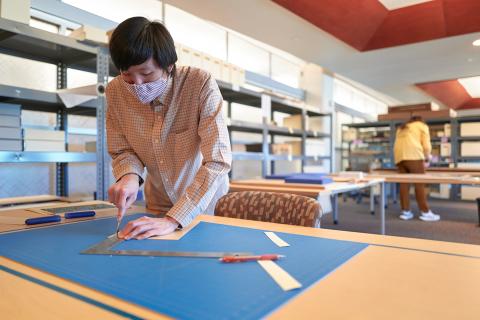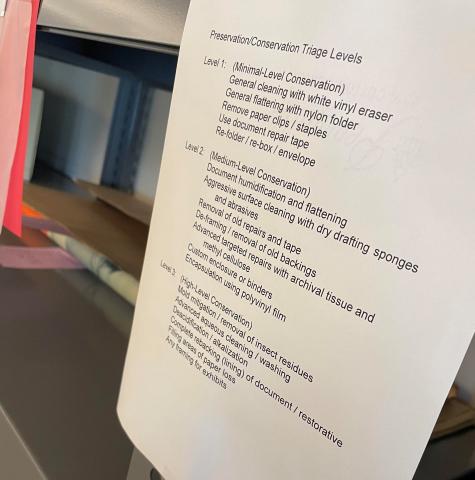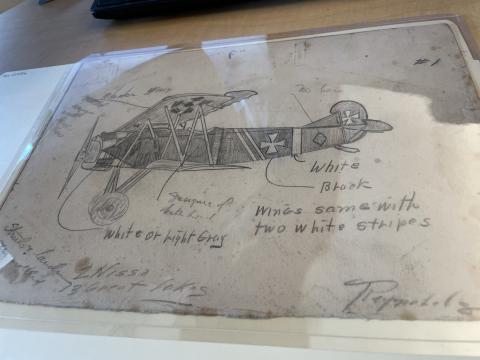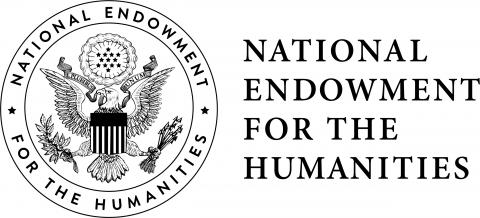
Ryan DiPaolo is the project archivist working on the "Inventing Hollywood: Preserving and Providing Access to the Papers of Renegade Genius Howard Hughes" joint project sponsored by the UNLV Libraries Special Collections and Archives and the UNLV Department of Film, which is funded by a generous grant from the National Endowment for the Humanities.
The National Endowment for the Humanities grant staff has been hard at work processing the Howard Hughes Motion Pictures Papers (MS-01036) over the past nine months. Our student assistants have performed extensive conservation work to preserve this important collection. The NEH’s generous grant provided the opportunity to teach and foster what may become the next generation of film archivists or conservators. Under the guidance of UNLV Libraries Conservator Michael Don Fraser, the grant staff have learned about a number of important conservation techniques in order to give this collection the attention it deserves.

When processing the United Artists Corporation financial records and California Pictures (Cal-Pix) advertisements within the collection, staff encountered warped paper, rusted attachments (such as paper clips and staples), and torn paper throughout the collection. Students began diligently working to conserve these materials using a number of different techniques. The three main techniques used to treat material in the Howard Hughes Motion Picture Papers were humidification, flattening, and encapsulation.
In the image below, Kyle Gagnon places an advertisement for the Cal-Pix film The Sin of Harold Diddlebock (1947) on blotter paper to remove excess moisture after a 24-hour steam bath in a humidification chamber. Weights were placed strategically over materials to ensure that they remained flat as they dried. Depending on the severity of the distortion, paper could remain under weights for up to a week.
Some items in the collection that are fragile or will see high use warrant encapsulation, which involves placing the item into special housing that prevents further damage to the material. The largest number of materials requiring encapsulation came from the Caddo Company, Inc. records, Hughes’ first production company, which was founded in the 1920s. In this case, an ultrasonic welder was used to place the item between two sheets of archival Mylar (a stable polyester film) which allowed the material to be viewed and handled without further damage. One interesting document that was encapsulated was a sketch drawn by Harry Reynold of model airplanes that were used for the film Hell’s Angels (1930) pictured below.

The Howard Hughes Motion Pictures Papers contain archival materials that date back to the 1920s, and the age of the materials has presented the team with many preservation challenges. As the processing effort continues, there are sure to be additional opportunities to implement new conservation techniques in order to preserve this important collection.

Created in 1965 as an independent federal agency, the National Endowment for the Humanities supports research and learning in history, literature, philosophy, and other areas of the humanities by funding selected, peer-reviewed proposals from around the nation. Additional information about the National Endowment for the Humanities and its grant programs is available at: www.neh.gov.


